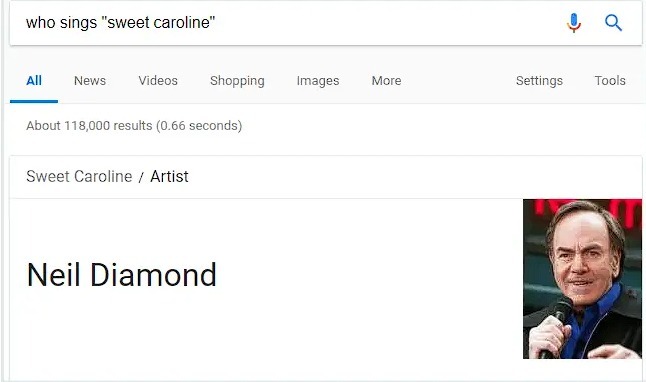Guides

In any SEO campaign, keywords are among the first things you’ll encounter. These are words or phrases that search engines associate with your website, so when users search for them, your site appears in the results. Keywords should reflect the core aspects of your business, closely tied to the services or content you offer on your site. The right keywords ensure that search engines understand what your website is about and who it should be shown to.
The Two Phases of Keyword Strategy: Research and Optimization
Effective keyword use involves two main steps: research and optimization. For those who are new to SEO, this guide will provide insight into these steps and explain the role keywords play in improving your site’s visibility and digital presence. Keyword research should be seen as an ongoing process, allowing your SEO strategy to evolve with changing market trends and search behaviors.
Choosing the Right Keywords
A well-crafted keyword strategy goes beyond bringing traffic to your site—it’s about attracting the right audience. By researching the best keywords for your business, you’ll gain valuable insights into your target audience’s needs and interests. For example, you might learn that potential customers are not only searching for specific products but also for information about solutions to their problems. This insight helps create a more effective content strategy, which ensures you’re attracting high-quality traffic that is likely to convert.
Keyword research should also be an ongoing process. As market trends change and new search patterns emerge, updating your keyword strategy allows you to stay ahead of the curve and continue reaching your audience effectively.
There are two primary categories of keywords that businesses should focus on: transactional and informational keywords. These categories allow you to tailor your SEO strategy depending on the type of audience you want to attract.
Transactional Keywords:

These keywords reflect an intent to make a purchase or engage with a service. They may be general or very specific depending on where the user is in their buying journey. By targeting transactional keywords, businesses can attract users who are closer to making a decision, leading to higher conversion rates.
Example:
Targeting transactional keywords helps businesses reach users at various stages of the purchasing cycle, increasing the likelihood of conversion.
Informational Keywords:

These are keywords where users are seeking information rather than making a purchase. Informational queries are generally more common than transactional ones, and they tend to be longer and more specific. By targeting informational keywords, you can create content that answers users’ questions, builds brand authority, and attracts a more engaged audience.
Example:
By providing high-quality answers to these queries, businesses can raise their profile and potentially convert informational searchers into customers in the future.
Short-Tail vs. Long-Tail Keywords
When categorizing keywords, they can also be classified as either short-tail or long-tail. These terms refer to the length and specificity of the search queries, which affects how often they’re searched and how competitive they are.
Short-Tail Keywords: These are typically one or two-word phrases that are broad and highly competitive. For example, “raincoat” or “local weather” are common short-tail keywords. Due to their general scope, these keywords are more difficult to rank for and often attract a larger search volume.
Long-Tail Keywords: These are longer and more specific phrases that often lead to more relevant traffic. Despite having lower search volume, long-tail keywords tend to attract a higher conversion rate because they indicate that the user has a specific need in mind. For example, “red raincoat for dogs” or “why does it rain more in April.”
Although long-tail keywords may generate less traffic, they are often easier to rank for and can provide better results in terms of conversions. Short-tail keywords, on the other hand, are typically more competitive, but can still be used strategically to help improve visibility for broader topics.
To start with AMP, add the AMP HTML Boilerplate in the <head> section of your web page. This boilerplate sets up the fundamental structure and includes the essential tags for AMP compatibility. Here’s what it consists of:
a. Required Meta Tags: These tags define the character encoding, viewport settings, and the AMP library version.
b. AMP Runtime Script: This script is responsible for fetching and rendering the AMP components on your page.
c. Link to the AMP Stylesheet: This stylesheet ensures your page follows AMP’s design standards.
Search engines are constantly evolving to provide the most accurate and relevant results to users. To do this, they have advanced their understanding of keyword semantics—how words and phrases relate to one another. Algorithms now look at keywords in the context of the content and the searcher’s intent, rather than just matching exact phrases.
Latent Semantic Indexing (LSI): This is a technique used by Google to understand the context behind keywords. By analyzing related words and phrases that often appear together, Google can better understand a page’s content and provide more accurate search results.
For example, a page targeting “burglar alarms” is likely also discussing topics related to “home security” and “CCTV systems.” To rank for these terms, a page should have a clear thematic focus, such as “security systems,” so that search engines can better understand its relevance to security-related queries.
As search engines continue to refine their understanding of keywords, it’s no longer enough to simply target specific phrases. Instead, your content should build around themes that align with user intent and the broader context of the search query.
By focusing on both keyword semantics and the use of related keywords, businesses can enhance their visibility in search results, ensuring they’re providing the most relevant and valuable content to their audience.
Validation is essential to ensure your AMP page meets the AMP Project standards. Use the online AMP Validator tool to check your webpage for any errors or issues. Address any problems the validator identifies, such as missing or incorrect tags, to ensure your page has valid AMP markup. The validator will offer guidance on how to fix these issues.
AMP doesn’t hinder monetization efforts. In fact, AMP supports various ad formats, including responsive ads, video ads, and native ads.
Keyword research isn’t just about identifying words—it’s about understanding your audience, crafting relevant content, and staying ahead of evolving trends. At Tomatotree Digital, we specialize in helping Kerala-based businesses harness the power of strategic keyword research to drive meaningful results.
By combining insights, creativity, and local expertise, we ensure your website stands out in the competitive digital landscape. Ready to optimize your keywords? Let’s create strategies that truly connect with your audience!
This blog post outlines the keyword research process, including tools and techniques.
This article discusses the importance of choosing relevant keywords that align with user intent.
This article differentiates between transactional and informational keywords and provides examples.
0
Your brand deserves the best! TomatoTree Digital, Kerala SEO Service Providers, crafts bespoke SEO strategies for lasting results. Contact us now and take the leap to online success!

Never settle for anything less than the best! Hire the top SEO experts from the Best SEO Company in Kerala and benefit from the customized Search Engine Optimization strategies designed exclusively for your brand.

India

United Kingdom
Newsletter
Never settle for anything less than the best!
Other Links
WhatsApp us